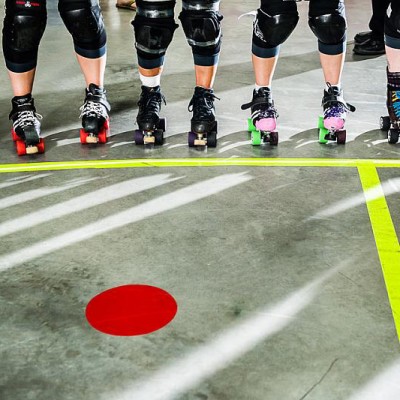
Being aware of your thoughts, actions, and feelings is key when it comes to mental performance. Self-awareness helps you analyze your current state, as well as your progress. Mental skills training is not about applying a strategy as a one time fix. All of the training requires reflection, adjustments, and effort in order to meet your individual needs.
In the last Mental Muscle post we learned about managing your emotions. We know emotions are subjective reactions to an event in our environment. More importantly, we learned that our emotions impact our bodies, thoughts, and behaviors. I ended the post with some helpful tips that you can apply in your everyday lives. The last tip was about having a PLAN in place to help move yourself away from the red or yellow zone and closer into the green zone.
Today I’m going to dive deeper into developing plans that can be used when you are faced with a distraction or an unwanted emotion/behavior.
Know Your Performance Signals
In order to create a plan to help you stay in your green zone, you need to know what it means to be GREEN! Take a look at your answers from the self-awareness traffic light exercise. What are your thoughts, feelings, and actions? Basically, how do you know that you are having a great performance?
My Green Zone Signals were:
My Thoughts: I was in the present: focusing on what I needed to do at that very moment. I had a zen-like focus, as it was not forced and felt like I was a part of the moment opposed to watching what was happening around me.
My Feelings: I was very confident. I had lots of energy to move around the track, yet I felt calm and in control.
My Actions: On the track, I was in control of every action I made. I also communicated more clearly to my teammates. On the bench, I smiled and brought positive encouragement.
Everything that is underlined are what I attributed as signals to having a great performance. When I noticed these signals, I knew I was in my Green zone!
Now, the same thing goes with having a mediocre or poor performance. Even though you might not want to admit it, you need to acknowledge when you are not performing at your best. This is not done to put yourself down. Instead, it is an opportunity to make adjustments to better your performance.
My Yellow Zone Signals were:
My Thoughts: Even though I was focused on the game, I would catch my mind wandering. I found myself thinking of previous jams or mistakes. My mind was like a seesaw: one end was my performance, the other end on past events.
My Feelings: I was not confident in my abilities as an athlete. I felt unprepared which made me feel slightly anxious or nervous.
My Actions: I became inconsistent. It was almost like I had no intention or control over my movements. In this state, I clapped and smiled less. I would get penalties that could have been easily avoided if I were more focus.
Again, everything underlined are what I attribute as signals that I was in my yellow zone. I was not having a horrible performance, but it was nowhere near my best.
Switching from Zones
It’s easier to move from Green to Yellow to Red than it is to move in the other direction, out of your Red zone into a Green zone — the same way it’s easier to slip into the worst physical shape of your life than into your best physical shape. The reason being, there is less work involved on your way down. Improving your mental game requires effort and hard work!
Let’s look at a simple way that you can create a plan for yourself to stay in the green.
Remember that everyone is different! You need to develop a plan that works for you! Your plans need to be simple to implement. The goal is to apply a plan to improve your performance, not create something that will take your focus away.
Changing Your Thoughts
Green Zone (Zen-like focus) vs. Yellow Zone (Mind Wandering)
As soon as I realise that my mind is wandering I need to implement a plan to try to change my focus back into the present moment. What would you do to change your focus? Here is a list of ideas that I developed:
- I could use positive self-talk to change my thoughts or instruct myself on what I need to do.
- Give myself a focus goal for the upcoming jam. Ex: always be next to my teammate, communicate the position of the opposing jammer.
- On the bench, remind myself of my strengths (overall or specific to this game). I could also remind myself of my team’s strengths and the role that I play within the team.
If you want to read more, check out this blog on Focus.
Changing Your Emotions
Green Zone (Energetic + Calm) vs. Yellow Zone (Slightly Nervous + Anxious)
As soon as I realise that I’m feeling slightly nervous or anxious, I need to use a plan that will help me calm down… but not too much because I still need to be energetic. Here is a list of ideas that I could choose from:
- I could ask my bench manager for a break to reset/regroup
- Try some breathing techniques to slow down my heart rate
- Listen to calming music
- Play with a stress ball
As you can see, when you have a plan in place it will be easier to prepare for these moments. If playing with a stress ball helps calm down your nerves, then you will make sure that there is a stress ball on the bench ready to go just in case you need it.
Changing Your Actions
Green Zone (Clear Communication, Smiling, Positive Encouragement in every jam) vs. Yellow Zone (More Penalties + Inconsistent in communication and Positive Reinforcement) As soon as I notice the change in my actions, I could try to implement the following plans:
- I could force myself to smile or clap after every jam.
- Give myself a communication goal for the upcoming jam. Ex: Call out the position of the opposing jammer, call out “On me” every time I make contact with the opposing jammer.
- On the bench, I will give at least one positive comment to one teammate after every jam.
As you can see, these plans are very simple and easy to use. By making these little changes, you can help improve your overall performance. Maybe it won’t be your best performance to date, but you will end the game in a better position than if you did nothing.
Here Are Some Other Helpful Tips:
1. Know Your Triggers
What is it in your environment that you are reacting to negatively or being distracted by? Basically, what is taking you out of your Green Zone? By knowing what factors affect you the most, you can create specific plans on combating these specific triggers. With mental skills training, you can prevent these triggers from affecting your performance in the first place.
2. Monitor your Zones
Practice is not just a time to practice technical or tactical skills. It is a place to test out and strengthen your mental game; especially practicing the plans that you created for yourself. If you notice you’re not in your Green Zone, implement your plans! A game is not the place to be trying new skills. Remember to Track your Progress!
Good luck creating your re-focussing plans, and please feel free to post in the RDA Athlete Zone on Facebook if you need help or ideas!
– Jess

 Pre-Hab: How to Engage Your Core
Pre-Hab: How to Engage Your Core  Fresh Meat – You Got This!
Fresh Meat – You Got This!  The Top Ten Exercises for Roller Derby Athletes
The Top Ten Exercises for Roller Derby Athletes  Cross-Training for Roller Derby: A Primer
Cross-Training for Roller Derby: A Primer  Prehab! Feet and Ankles
Prehab! Feet and Ankles